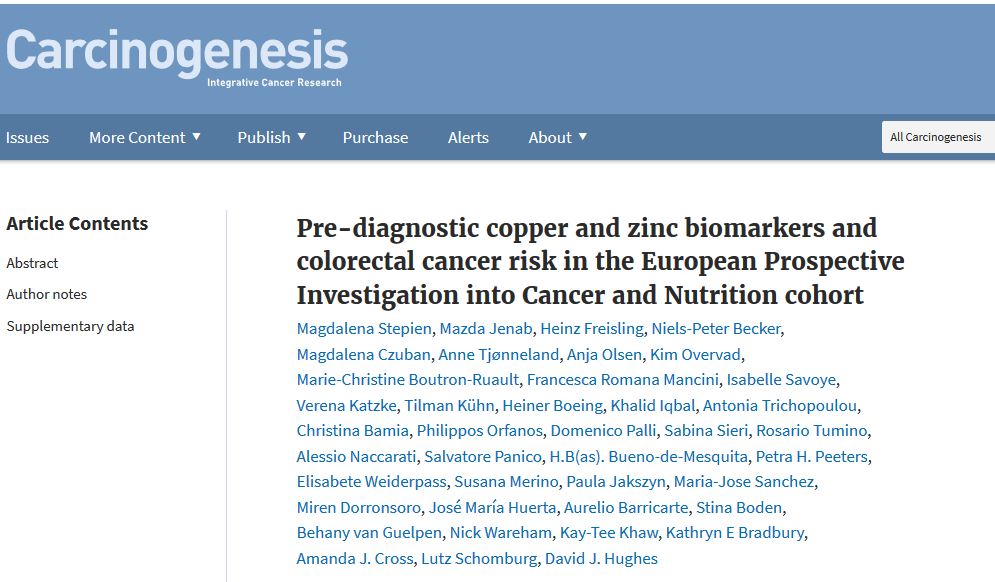
Higher circulating concentration of copper was associated with a raised CRC risk (OR=1.50; 95%CI: 1.06, 2.13; p-trend=0.02) while an inverse association with cancer risk was observed for higher zinc levels (OR=0.65; 95%CI: 0.43, 0.97; p-trend=0.07). Consequently, the ratio of copper/zinc was positively associated with CRC (OR=1.70; 95%CI: 1.20, 2.40; p-trend=0.0005). In subgroup analyses by follow-up time, the associations remained statistically significant only in those diagnosed within two years of blood collection.
In conclusion, these data suggest that copper or copper levels in relation to zinc (copper to zinc ratio) become imbalanced in the process of CRC development. Mechanistic studies into the underlying mechanisms of regulation and action are required to further examine a possible role for higher copper and copper/zinc ratio levels in CRC development and progression.


